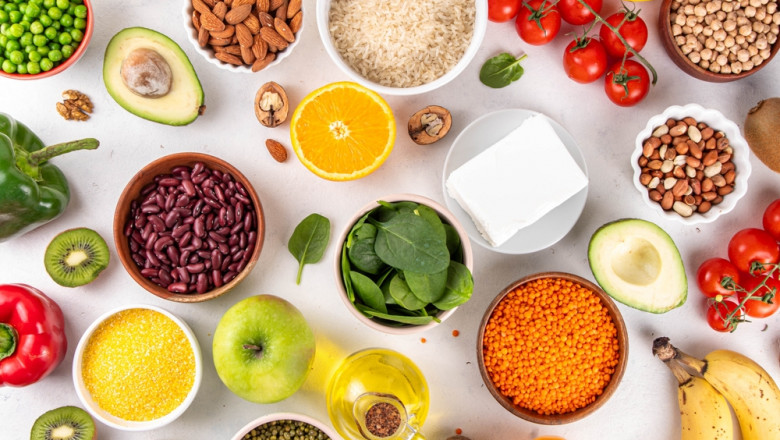views
Moreover, small dietary changes can prevent serious complications like heart disease and stroke. A balanced diet is key, but it’s equally important to know which supplements to avoid for safe blood pressure management.
In this guide, you will learn:
-
Why diet matters for blood pressure
-
The best foods for heart health
-
Which supplements to avoid for safe blood pressure management
-
How to plan daily meals
-
Tips to stay consistent with a heart-healthy diet
By the end, you’ll have the tools to make smarter food choices for better health.
Why Does Diet Matter for Blood Pressure?
Blood pressure is affected by what you eat every day. The wrong foods can raise it, while the right ones can help keep it steady.
How Unhealthy Foods Affect Blood Pressure
Excess salt, unhealthy fats, and processed foods force your body to retain water. This extra fluid puts pressure on blood vessels, leading to higher blood pressure. Fast food, canned goods, and processed snacks often contain high amounts of sodium.
Moreover, a diet high in unhealthy fats can lead to clogged arteries. When arteries become narrow, your heart has to work harder, increasing blood pressure.
Nutrients That Help Regulate Blood Pressure
Some nutrients support healthy blood pressure. These include:
-
Potassium: Found in bananas and leafy greens, it helps flush out excess sodium.
-
Magnesium: Found in nuts and seeds, it relaxes blood vessels.
-
Fiber: Found in oats and beans, it improves heart health.
Therefore, focusing on these nutrients can make a big difference. So, what should you eat to keep your blood pressure in check? Let’s break it down.
What Should You Eat for Healthy Blood Pressure?
Eating the right foods can improve heart health and lower blood pressure. Moreover, a balanced diet keeps your body strong and reduces the risk of complications.
Best Foods for Blood Pressure Control
Here are some of the best foods to include in your diet:
-
Leafy Greens: Spinach, kale, and lettuce are packed with potassium, which helps balance sodium levels.
-
Berries: Blueberries and strawberries contain antioxidants that protect blood vessels.
-
Oats: Rich in fiber, they help lower cholesterol and support heart health.
-
Nuts and Seeds: Almonds, walnuts, and flaxseeds provide magnesium, which relaxes blood vessels.
-
Fatty Fish: Salmon and mackerel contain omega-3 fatty acids that reduce inflammation and improve circulation.
Furthermore, choosing whole foods instead of processed ones can make a big impact. The more natural and less processed your food is, the better for your blood pressure.
Of course, just as some foods help, others can make things worse. Let’s look at what to limit or avoid.
Foods and Drinks to Avoid (And Why)
Some foods and drinks raise blood pressure, making it harder to stay healthy. Reducing them in your diet can help keep your heart strong.
Key Foods and Drinks to Limit
-
Salt-Heavy Foods
-
Processed meats, fast food, canned soups, and frozen meals contain large amounts of sodium.
-
Too much salt makes your body retain water, increasing blood pressure.
-
Sugary Drinks
-
Sodas, energy drinks, and some fruit juices contain high amounts of sugar.
-
Excess sugar can lead to weight gain and insulin resistance, both of which affect blood pressure.
-
Excessive Caffeine and Alcohol
-
Too much coffee or energy drinks can cause short-term spikes in blood pressure.
-
Alcohol, when consumed in large amounts, can increase blood pressure over time.
-
Trans Fats and Processed Snacks
-
Chips, pastries, and fried foods contain trans fats that clog arteries and increase blood pressure.
-
These foods also raise bad cholesterol levels.
Instead of salty chips, try air-popped popcorn with a sprinkle of herbs. Making better food choices can help manage blood pressure effectively.
Now that we know what to eat and what to avoid, how can you turn this into a daily meal plan?
How to Plan Your Daily Meals for Better Blood Pressure
A good meal plan makes it easier to stick to a healthy diet. Moreover, planning ahead helps avoid unhealthy choices.
Simple Meal Plan for Blood Pressure Control
-
Breakfast: Oatmeal with berries and nuts
-
Lunch: Grilled salmon with quinoa and steamed vegetables
-
Dinner: Grilled chicken with roasted sweet potatoes and leafy greens
-
Snacks: Unsalted nuts, yogurt, or hummus with veggies
Meal Prep Tips
-
Cook meals in advance to save time.
-
Use fresh herbs instead of salt for flavor.
-
Keep healthy snacks available to avoid processed foods.
A solid meal plan is a great start, but how do you stick to it long-term?
Practical Tips for Sticking to a Blood Pressure-Friendly Diet
Staying consistent with healthy eating can be challenging. However, with the right approach, it becomes easier.
Easy Ways to Stay on Track
-
Meal Prepping
-
Prepare meals in advance to avoid unhealthy choices.
-
Reading Food Labels
-
Check sodium and sugar content before buying packaged foods.
-
Finding Tasty Alternatives
-
Instead of salty snacks, try nuts or roasted chickpeas.
-
Staying Hydrated
-
Drink water instead of sugary drinks to stay refreshed.
Moreover, small changes add up over time. Even swapping one unhealthy meal a day can make a big difference.
If you're looking for more ways to support your heart health, here’s what you can do next.
Conclusion
To maintain healthy blood pressure, remember these key points:














Comments
0 comment